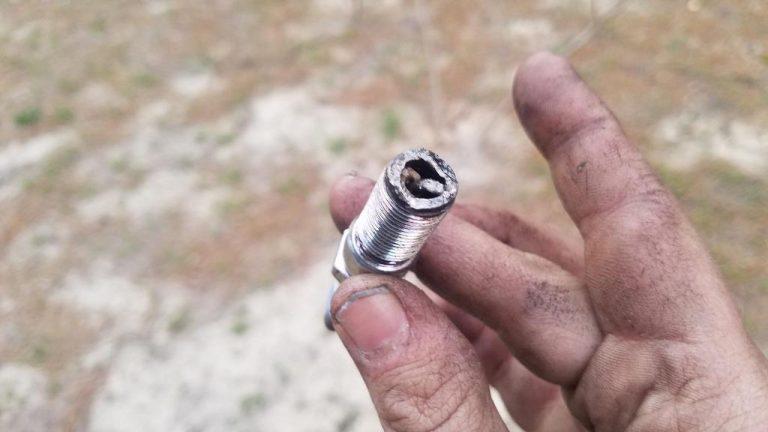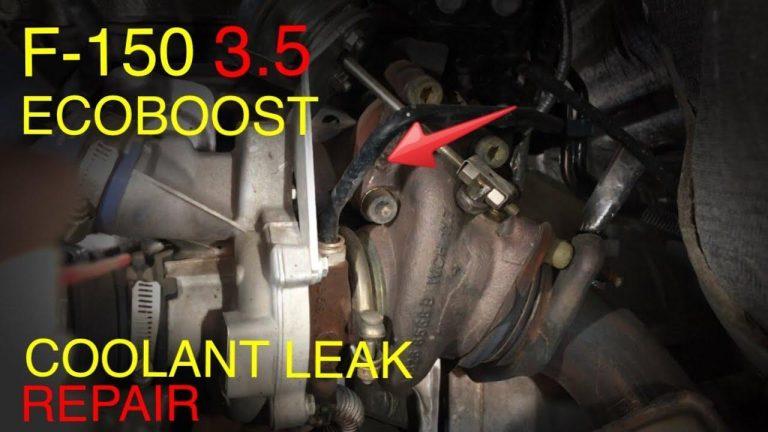6.0 Powerstroke ICP Sensor Symptoms: Top Signs and Fixes
A faulty ICP sensor in a 6.0 Powerstroke can cause hard starting and poor engine performance. Symptoms also include erratic idling and reduced fuel efficiency.
The ICP (Injection Control Pressure) sensor in a 6. 0 Powerstroke diesel engine is crucial for optimal performance. It monitors the pressure of the oil used to control fuel injectors. Proper functioning ensures that the fuel injectors receive the correct pressure, which is vital for efficient combustion.
A malfunctioning ICP sensor can lead to various issues, including hard starts, poor engine performance, erratic idling, and diminished fuel efficiency. Identifying these symptoms early is essential to prevent further damage and maintain the engine’s health. Regular maintenance and timely sensor replacement can save you from costly repairs.
Common Icp Sensor Issues
The 6.0 Powerstroke engine relies heavily on the Injection Control Pressure (ICP) sensor. This sensor monitors and regulates the fuel injection pressure. When it malfunctions, it can cause a variety of engine issues. Below are some common ICP sensor problems to watch for.
Erratic Idling
Erratic idling is a common symptom of a faulty ICP sensor. The engine may idle unevenly or fluctuate in RPMs. This occurs due to incorrect fuel pressure readings. The sensor sends inaccurate data to the ECU, causing inconsistent fuel delivery.
- Engine RPMs fluctuate at idle.
- Vehicle may stall unexpectedly.
- Inconsistent acceleration from stop.
If you notice these signs, check the ICP sensor. It could be causing these erratic idling issues.
Poor Fuel Efficiency
A malfunctioning ICP sensor can lead to poor fuel efficiency. The sensor provides crucial data for fuel injection timing. Incorrect data can lead to inefficient fuel use.
| Symptom | Possible Cause |
|---|---|
| Decreased MPG | Incorrect fuel pressure readings |
| Higher fuel consumption | Inaccurate injection timing |
Check the ICP sensor if you experience a drop in fuel efficiency. Replacing a faulty sensor can restore proper fuel consumption.
Engine Performance Symptoms
The 6.0 Powerstroke ICP sensor is crucial for engine performance. It helps manage fuel injection pressure. When it fails, the engine shows specific symptoms.
Loss Of Power
A faulty ICP sensor can cause a loss of power. The engine may struggle to accelerate. This happens because the sensor gives wrong pressure readings. The engine control module then adjusts fuel incorrectly.
Here are some signs of power loss:
- Sluggish acceleration
- Decreased towing capability
- Engine hesitates or stalls
Hard Starting
Another symptom is hard starting. The engine may crank longer before starting. Sometimes, it may not start at all. This is due to incorrect fuel pressure readings.
Common signs of hard starting:
- Long crank times
- Frequent no-start conditions
- Rough idle after starting
These symptoms indicate the ICP sensor needs checking. Proper diagnosis can save time and money. Always consult a professional mechanic for accurate inspection.
Diagnostic Trouble Codes
Understanding Diagnostic Trouble Codes (DTCs) is crucial for diagnosing your vehicle. These codes point to specific issues, helping you fix problems efficiently. For the 6.0 Powerstroke, two common DTCs related to the ICP sensor are the P2285 and P2287 codes.
P2285 Code
The P2285 code indicates a low input signal from the ICP sensor. This usually means the sensor is malfunctioning or the wiring is faulty. The main symptoms of the P2285 code are:
- Check Engine Light is on
- Poor engine performance
- Hard starting
- Rough idling
Addressing this code involves checking the sensor and its connections. If necessary, replace the ICP sensor.
P2287 Code
The P2287 code signifies an intermittent signal from the ICP sensor. This can be due to a loose connection or a failing sensor. Symptoms of the P2287 code include:
- Engine misfires
- Loss of power
- Poor fuel efficiency
- Check Engine Light is on
To fix this issue, inspect the wiring and sensor. Ensure all connections are secure.

Credit: prosourcediesel.com
Impact On Fuel Injection
The 6.0 Powerstroke ICP sensor plays a crucial role in fuel injection. This sensor measures the pressure of the fuel delivered to the engine. When it malfunctions, the entire fuel injection process can go awry. Understanding the symptoms helps in diagnosing issues early, preventing severe engine damage.
Incorrect Fuel Pressure
A faulty ICP sensor can lead to incorrect fuel pressure. The engine may not receive the right amount of fuel. This can result in poor performance and reduced fuel efficiency. The vehicle might also experience sudden stalls or fail to start altogether.
Here are some common signs of incorrect fuel pressure:
- Engine misfires
- Rough idling
- Black smoke from the exhaust
- Reduced power
Injection Timing Issues
Another significant impact is on injection timing. The ICP sensor helps the engine control module (ECM) to determine the right time for fuel injection. If the sensor is faulty, the timing may be off. This can lead to knocking noises and engine hesitation.
Symptoms of injection timing issues include:
- Knocking or pinging sounds
- Delayed acceleration
- Hard starting
- Poor fuel economy
Addressing these symptoms early can save costly repairs.
Visual Inspection Signs
Recognizing the visual inspection signs of a failing 6.0 Powerstroke ICP sensor can save time and money. These signs often indicate the need for a replacement. Let’s delve into the key indicators under the visual inspection category.
Oil Leaks
Oil leaks around the ICP sensor are a major warning sign. If you see oil on the sensor, it’s a red flag. Here are the specific areas to check:
- Around the sensor body.
- Near the sensor connectors.
- On the engine block close to the sensor.
Use a flashlight to spot any oil accumulation. Clean the area to confirm it’s from the sensor.
Damaged Wiring
Inspecting the wiring is crucial for diagnosing ICP sensor issues. Look for these signs:
- Frayed wires near the sensor.
- Burn marks or melted insulation.
- Loose or corroded connectors.
Damaged wiring can cause inaccurate readings. Ensure all connections are tight and clean.
Below is a simple table to summarize the visual inspection signs:
| Inspection Area | Signs to Look For |
|---|---|
| Oil Leaks | Oil around sensor, connectors, engine block |
| Damaged Wiring | Frayed wires, burn marks, loose connectors |
Regular inspections help maintain your 6.0 Powerstroke engine. Early detection of these signs can prevent costly repairs.
Credit: www.ford-trucks.com
Testing The Icp Sensor
The ICP sensor in a 6.0 Powerstroke engine monitors the high-pressure oil system. Testing the ICP sensor can help identify issues before they escalate. This section explains two methods to test the ICP sensor: using a multimeter and using a scan tool.
Using A Multimeter
To test the ICP sensor with a multimeter, follow these steps:
- Turn off the engine and disconnect the ICP sensor.
- Set your multimeter to measure volts (DC).
- Connect the multimeter’s red lead to the sensor’s signal wire.
- Connect the black lead to the ground wire.
- Turn the key to the “ON” position (do not start the engine).
- Check the voltage reading on the multimeter.
The voltage should be around 0.24 to 0.28 volts. If it’s outside this range, the ICP sensor may be faulty.
Using A Scan Tool
A scan tool simplifies testing the ICP sensor. Follow these steps:
- Connect the scan tool to the vehicle’s OBD-II port.
- Turn on the scan tool and select the vehicle make and model.
- Navigate to the live data stream menu.
- Locate the ICP sensor data in the list.
- Start the engine and monitor the ICP sensor readings.
The ICP sensor reading should be between 500 to 700 psi at idle. Higher or lower readings indicate potential issues.
Testing the ICP sensor can help maintain the health of your 6.0 Powerstroke engine. Use these methods to ensure your engine runs smoothly.
Replacement Procedure
Replacing the ICP sensor in your 6.0 Powerstroke engine is crucial. This can resolve various performance issues. Follow this easy guide to replace the sensor efficiently.
Removing The Old Sensor
Begin by gathering your tools. You’ll need a wrench, a socket set, and gloves.
- Turn off your engine and disconnect the battery.
- Locate the ICP sensor. It is often found near the valve cover.
- Use the wrench to loosen the bolts on the sensor.
- Carefully remove the electrical connector from the sensor.
- Unscrew the sensor using the socket set.
- Remove the old sensor from the engine bay.
Installing The New Sensor
Now, it’s time to install the new ICP sensor. Make sure you have the correct replacement part.
- Place the new sensor into the socket.
- Hand-tighten the sensor to ensure it fits correctly.
- Use the socket set to securely tighten the sensor.
- Reconnect the electrical connector to the new sensor.
- Reinstall any bolts you removed earlier.
- Reconnect the battery and start the engine.
Check for any leaks or warning lights. If everything looks good, you are done!
Tip: Always wear gloves to protect your hands. Be careful not to over-tighten the sensor.

Credit: m.youtube.com
Preventive Maintenance Tips
Maintaining the health of your 6.0 Powerstroke engine is crucial. One key component to monitor is the ICP sensor. Preventive maintenance can help avoid costly repairs and ensure smooth engine performance.
Regular Inspections
Conducting regular inspections is essential. Look for signs of wear and tear. Check the ICP sensor for oil leaks. Inspect the wiring for any damage. A visual check every month can prevent major issues.
- Inspect for oil leaks
- Check wiring for damage
- Look for wear and tear
Proper Engine Care
Proper engine care extends the life of your ICP sensor. Use high-quality oil and filters. Keep the engine clean to avoid dirt buildup. Regular oil changes ensure the sensor functions properly.
| Maintenance Task | Frequency |
|---|---|
| Oil Change | Every 5,000 miles |
| Filter Replacement | Every 10,000 miles |
| Engine Cleaning | Every 3 months |
Follow these preventive maintenance tips. Your 6.0 Powerstroke engine will thank you. Stay proactive and keep your ICP sensor in top shape.
Frequently Asked Questions
What Are The Symptoms Of A Bad Icp Sensor?
A bad ICP sensor causes rough idling, hard starting, stalling, and poor fuel efficiency. It may trigger the check engine light.
What Are The Symptoms Of A Bad Ipr On A 6.0 Powerstroke?
Symptoms of a bad IPR on a 6. 0 Powerstroke include hard starting, stalling, rough idling, and loss of power.
What Does The Icp Sensor Do On A 6.0 Powerstroke?
The ICP sensor on a 6. 0 Powerstroke measures the oil pressure in the fuel injection system. This data helps the engine control module adjust fuel delivery for optimal performance.
What Are The Symptoms Of The Injector Control Pressure Sensor?
Symptoms of a faulty injector control pressure sensor include hard starting, engine misfires, poor fuel economy, and reduced engine performance. You may also notice black smoke from the exhaust and difficulty accelerating. Regular maintenance can help prevent sensor issues.
Conclusion
Recognizing 6. 0 Powerstroke ICP sensor symptoms is crucial for engine health. Address issues promptly to avoid costly repairs. Regular maintenance ensures peak performance and longevity. Stay informed and proactive about potential problems. Proper care keeps your vehicle running smoothly and efficiently.
Keep these tips in mind for a trouble-free driving experience.






